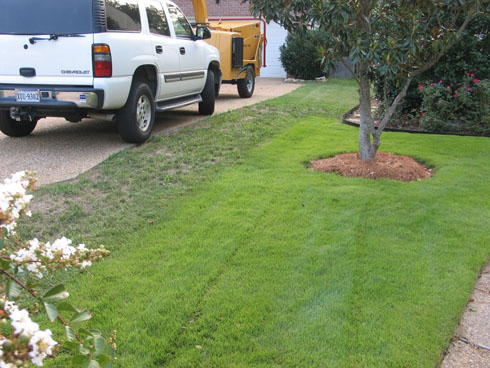Choosing and Establishing Warm-season Turfgrasses for Virginia Lawns
Given its transition zone location, choosing a lawn grass is a difficult decision in many parts of Virginia.

Given its transition zone location, choosing a lawn grass is a difficult decision in many parts of Virginia. The mountain region (USDA Horticultural zones 5b-6b) is likely best suited for cool-season turf, but even here we have a few zoysiagrass and bermudagrass lawns, and a host of bermudagrass athletic fields and golf courses. Central Virginia from Richmond to Southside (mostly zones 6b to 7a) is probably the most difficult area to choose a ‘best’ turfgrass for a lawn because of the likelihood of both hot summers and cold winters, a combination not likely to produce long-term success with either warm or cool-season grasses. The eastern part of Virginia (zones 7b to 8a) is better suited for warm-season grasses but the predominant lawn grass continues to be the cool-season tall fescue.
The primary basis for defining ‘potential success’ with either cool-season or warm-season grasses certainly has to consider temperature at some point. Cool-season grasses such as bluegrasses, fescues, and ryegrasses thrive under cool, humid conditions with temperatures of 60-75o F. Warm-season grasses prefer temperatures in the 80-95o F range. It is obvious that Virginia has fairly significant periods of both temperature ranges on an annual basis.
A difficult summer invariably results in increased interest in warm-season turf lawns. Understand that warm-season lawns are certainly not without their concerns. Warm-season grasses have the potential for winterkill during extreme winters, they will be dormant (i.e. no green color) 4-5 months out of the year, some are serious weed problems (bermudagrass, aka wiregrass), and not all varieties can be established from seed. However, warm-season grasses typically require 30% less water and have much lower pest pressures than cool-season turfgrasses, so an argument can be made that warm-season lawns can actually be quite ‘enviromentally friendly’ when properly selected and maintained. The Virginia Tech Turf Team has developed two digital presentations (and attached Powerpoint slides) as resources on choosing and establishing warm-season lawns. We hope these presentations will provide the information and guidance in making informed decisions on the establishment or conversion to warm-season turfgrasses. We hope these presentations will provide the information and guidance in making informed decisions on the establishment or conversion to warm-season turfgrasses.


